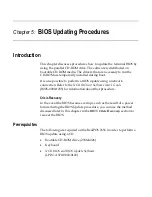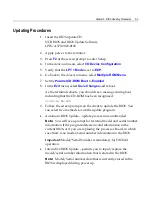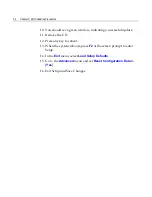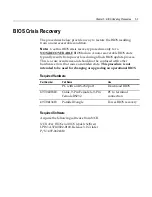
6-4
Chapter 6: Memory Dump
Prerequisites
Windows 2000 and Windows NT systems require preparation prior to
performing a memory dump.
For additional information about Windows Memory dump refer to the
Microsoft web site and search their Knowledge Base for the following:
•
Windows 2000 Memory Dump Options Overview (Q254649)
•
Gathering Blue Screen Information After Memory Dump in Windows
2000 or Windows NT (Q192463)
Windows XP/2000
To enable memory dump on a Windows 2000 system, complete the
following steps prior to performing the memory dump:
1.
In the
Control Panel
, click on
System
.
2.
In
System
Properties
, select
Advanced
and then
Startup
and
Recovery
.
3.
Under
System
Failure
, check the following boxes:
- Write an event to the system log
- Send an administrative alert
- Automatically reboot
4.
In
Write
debugging
information
select
Complete
Memory
Dump
, and
in
Dump
file
: enter -
C:\Memory
.
dmp
.
Note:
The size of the memory file can be very large. Therefore, the
file should be dumped to the local drive or a network drive and not
to diskettes.
5.
Check the box -
Overwrite any existing files
and enter
OK
. Do not
reboot the system yet.
6.
Click on START
→
Run. Enter
regedit
and click on
OK
.
7.
Go to
HKEY_LOCAL_MACHINE\System\CurrentControlSet\
Control\CrashControl
.
8.
Click on
Edit
and then on
New
.
9.
Click on
DWORD
Value
and enter
NMICrashDump
.
10.
Highlight
NMICrashDump
. Click on
Edit
and then on
Modify
.
Summary of Contents for RealPOS 80c
Page 1: ...NCR RealPOS 80c Release 1 1 Hardware User s Guide B005 0000 1359 Issue C...
Page 17: ...xv...
Page 18: ......
Page 55: ...Chapter 1 Product Overview 1 37...
Page 56: ......
Page 80: ...2 24 Chapter 2 Hardware Installation...
Page 108: ......
Page 118: ...5 10 Chapter 5 BIOS Updating Procedures...
Page 133: ...Chapter 6 Memory Dump 6 15...
Page 134: ......
Page 162: ...D 4...
















































